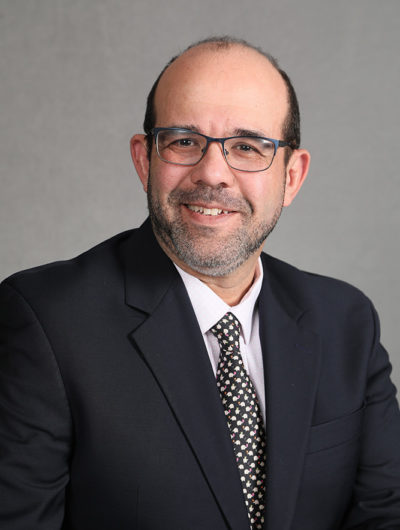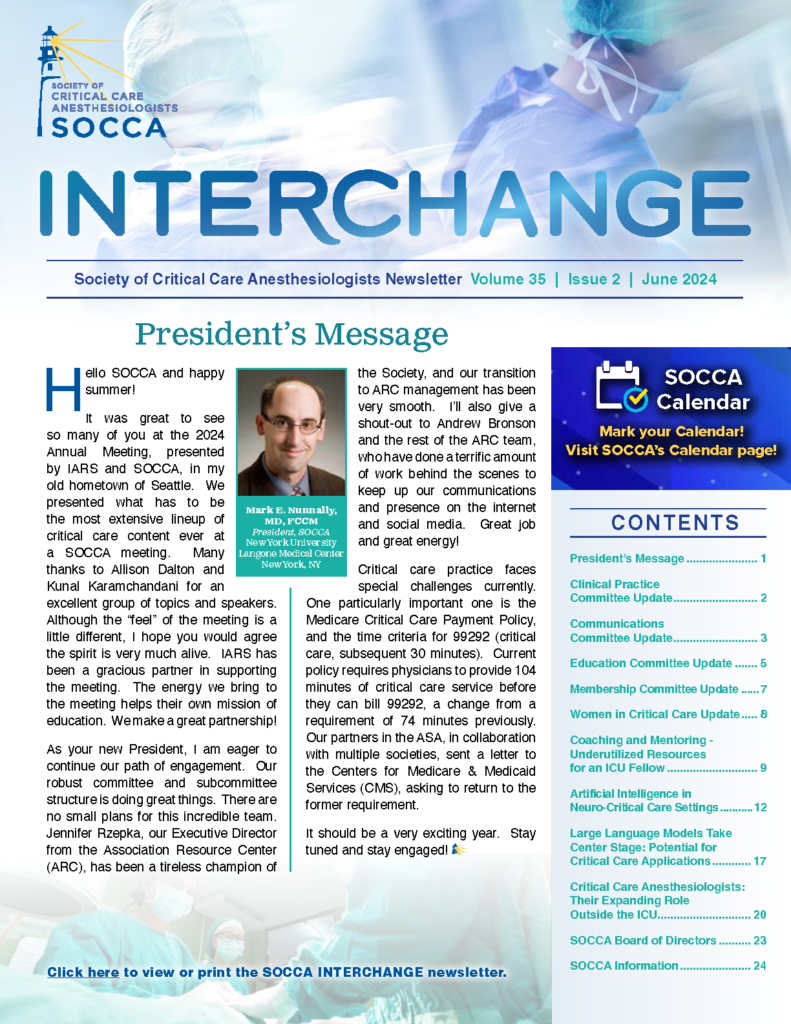An Annual Meeting in Sweatpants
The other day I was listening to one of my favorite podcasters (not in the medical field) about how she was forcing herself to wear regular clothes for five days in a row, as during the pandemic she had been wearing sweatpants for over 400 days and she had reached a point where she wanted to feel normal again.
Then I thought that in our profession, we have felt extremely abnormal but in the opposite direction; our work not only didn’t stop but, for most of us, increased in ways that were completely unforeseen a couple of years ago. We were overworked and unsettled but we always had to wear our work clothes. Nonetheless, when dealing with meetings, conferences and webinars, we became, like the rest of the world, one square out of many thinking whether to press “start video” depending on the situation—and sometimes our clothes.
And so, we reached the Annual Meeting, SOCCA’s flagship event, and with it the challenges to offer a robust—yet affordable—vehicle to learn, network, and feel like a connected group again, especially after last’s year cancellation. And what a challenge it was! Starting with envisioning exciting topics and enlisting compelling speakers to guaranteeing a virtual interface without glitches while creating a sense of camaraderie and community is no easy task.
How did we do? Let’s get into the nitty gritty: we had 421 registrants, which is a record attendance. To put in into perspective, Montreal (’19), Chicago (’18) and Washington DC (’17) had 273, 337 and 265 respectively, and even though the total revenue was obviously smaller due to the reduced cost, we were able to meet the budget, which has been difficult in the past. We presented 195 abstracts, significantly higher than previous years as well.
There is more good news in the numbers: both our general members and trainee members increased their participation, including non-members that hopefully will decide to become full members after the meeting. And participation from our female colleagues continues to increase, currently at 38%, the highest number of the last 7 years.
What can we do better? Like with every virtual platform, it was hard to keep most attendees focused all the time, as demonstrated in various levels of participation during different sections. It happens live too, and we are very familiar with segments that have more empty chairs. It’s a full day and maintaining undivided attention in front of the screen is hard. Some of the periods that had the biggest drop off in clicks were the abstract sessions, highlighting that there’s no substitute for being present and able to walk around looking at latest research and captivating cases.
In addition to creating an outstanding meeting, the society felt it needed to create more avenues to engage our members, and to that effect the Early Career group created a networking event for the up-and-coming generations of intensivists, where residents, fellows and young attendings interacted with seasoned (old) colleagues and leaders of the Society. It was extremely well received and reviewed, with a total of 54 participants. We expect to make this a permanent fixture in our face-to-face meetings.
Overall, the annual meeting proved to be a resounding success and demonstrated once more that SOCCA is the home for anesthesia intensivists. Perhaps the best way to summarize it is to simply paste one of the reviews from the feedback survey:
“Even though it was virtual, SOCCA was still a great meeting. SOCCA is always great—this is our home and the only time we, as critical care anesthesiologists, are not in the minority. I just love SOCCA!”
We must continue to capture the momentum and spotlight the pandemic has given us. One of our most immediate and most pressing actions is to make sure that our educational members become full members; our growth and financial health depends on it. To do that, we need to ensure our house is large enough and appropriately organized. To that end we are putting together an expanded committee and task force tree that will allow us to better fit and serve our ever-growing community.
I want to finish by giving you thanks. Thanks to the organizing committee for putting together an extraordinary meeting, thanks to the IARS for being such a strong partner, thanks to the chairs and members of each committee that work so hard to deliver excellent products and activities, but most of all thanks to you, the anesthesiologist-intensivist that makes a difference in the life of our patients, mostly in scrubs, sometimes in a suit, and yes, sometimes in sweatpants. Have a wonderful summer!




































